Second is the best!
If you are homeschooling a second grader, you need the lowdown on this amazing year.
We’ve got the essentials of what you need to know for homeschooling second graders, from curriculum to a daily schedule.
Welcome to homeschooling 2nd grade!
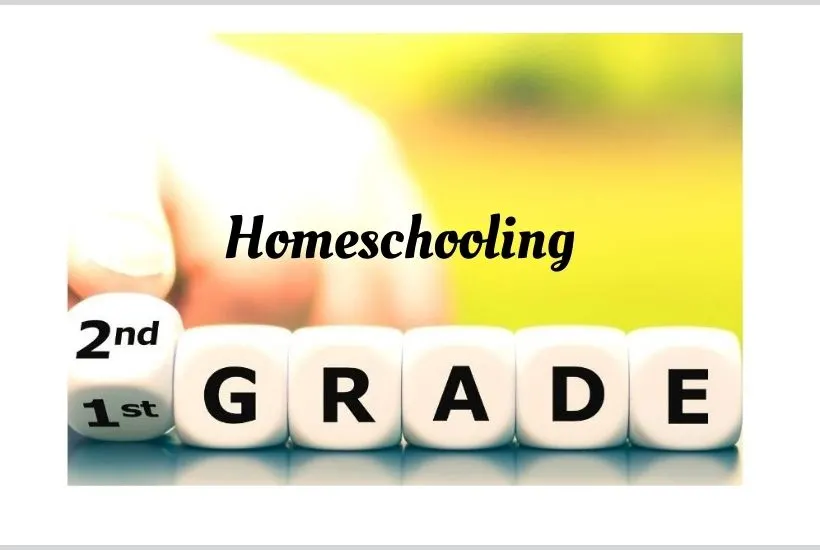
This article contains affiliate links to things that you might like.
Homeschooling a Second Grader
Homeschooling 2nd grade is busy but wonderful.
Second graders are excited to learn about the world around them, and their advancing skills make them capable of doing more.
You’ll also notice an uptick in their ability to sit and concentrate.
They still need plenty of movements and breaks though; they are still kids!
When homeschooling second graders, keep this in mind: you should have wiggle room in your schedule.
Yes, you want time at home to do your lessons (particularly in the skill subjects of math and language arts), but make time for blanket forts, the library, crafts, nature exploration, and field trips.
Learning should always have a dose of unstructured adventure; this is especially true in second grade.
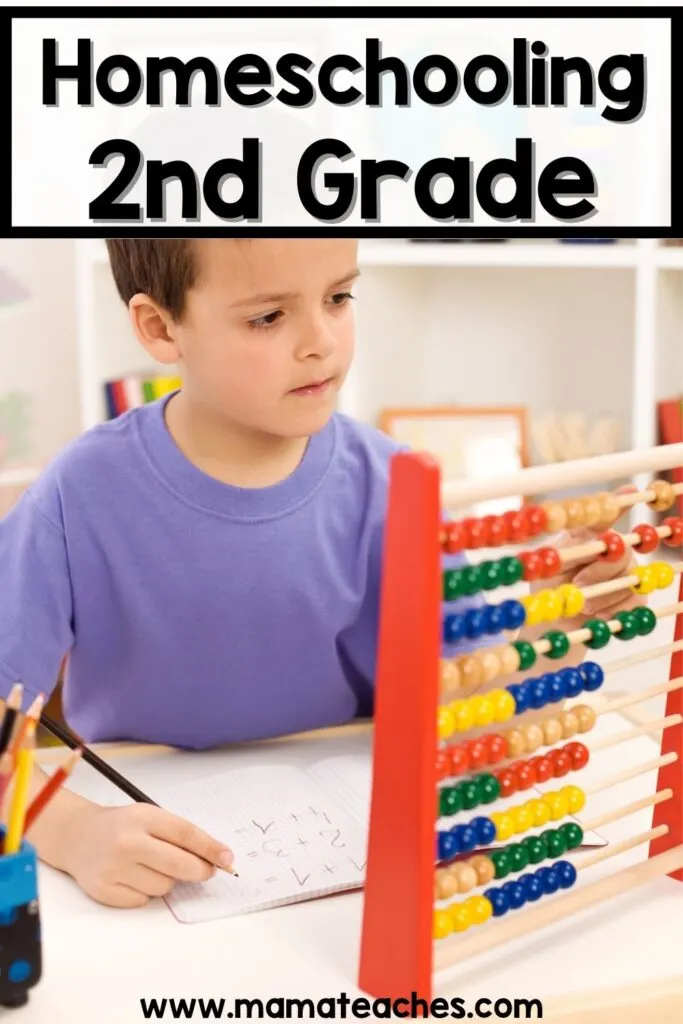
Second Grade Learning Objectives
As with first grade, the early years of school should focus on a strong grasp of the fundamentals.
Emphasize the skill subjects: math, reading, writing, and spelling.
Social studies and science are content subjects, so their learning objectives will vary depending on the curriculum you choose.
Remember that learning objectives are flexible; that is one of the reasons to homeschool.
Some children race through the objectives in certain subjects; others need more time to build a firm foundation before moving on to the next skill.
It’s okay if your child moves at a different rate; celebrate all progress!
Math
- Can write and solve addition and subtraction facts up to 20
- Can complete addition and subtraction up to 40 without regrouping
- Knows place value of 3 and 4 digit numbers
- Can interpret and solve a 1-step word problem
- Learns multiplication facts for 0-5 (up to 5 x 12)
- Can interpret picture graph and bar graph
- Knows three-dimensional shapes (cube, cone, pyramid, etc.)
- Can calculate perimeter of rectangle
- Can identify a right angle
- Identifies, compares, and write basic fractions (¼, ½, ⅓, ¾)
- Knows all coin and bill values and can combine to make sums
Reading
- Reads words with long vowel sounds (made by vowel pairs like “ea”, “oa”, and “ai”)
- Reads words with r-controlled vowels (like “farm” and “fur”)
- Can put together and read compound words (like “baseball)
- Knows contractions
- Can identify synonyms, antonyms, and multiple-meaning words
- Knows 2nd-grade high-frequency words
- Can read a 2nd grade-appropriate passage
Spelling
- Spells single-syllable words with blends like br, pl, and st
- Spells compound words
- Spells single-syllable words with vowel pairs (like “paid”)
- Can spell short words with r-controlled vowels (like “tar”)
- Knows how to spell 2nd grade high-frequency words
Handwriting, Grammar, and Composition
- Knows all letters (capitals and lowercase), numbers, and punctuation
- Uses proper spacing between words and sentences
- Starts sentences with capital letters and ends them with punctuation
- Writes on the line
- Identifies and writes sentences with short subject and predicate
- Knows parts of speech such as noun, verb, adjective, and adverb
- Composes friendly letter
- Can write a paragraph with the main idea, supporting details, and conclusion
- Can identify parts of a story: characters, setting, plot, resolution
- Composes short story with those parts
- Can use writing resources: dictionary and thesaurus
Science (these will vary but may include the following)
- Animal adaptation, hibernation, and migration
- Knows characteristics of animal groups (mammals, amphibians, insects, etc.)
- Can describe invertebrate/vertebrate
- Learns parts of food chain/web beginning with the sun
- Learns about fossils, endangered and extinct animals
- Carries out steps of the scientific method through hands-on experiments
- Learns and describe movements of the sun, moon, and planets
- Can describe changes in weather & temperature
Social Studies (these may vary as well)
- Creates a timeline of historical events (for a given period of study)
- Reads biographies and connects them to historical events
- Can read a map key or legend and knows cardinal directions
- Knows map symbols (can identify state and country on map/globe)
- Learns about natural and manmade resources
- Learns about producers, consumers, and currency
- Studies state or country resources and products
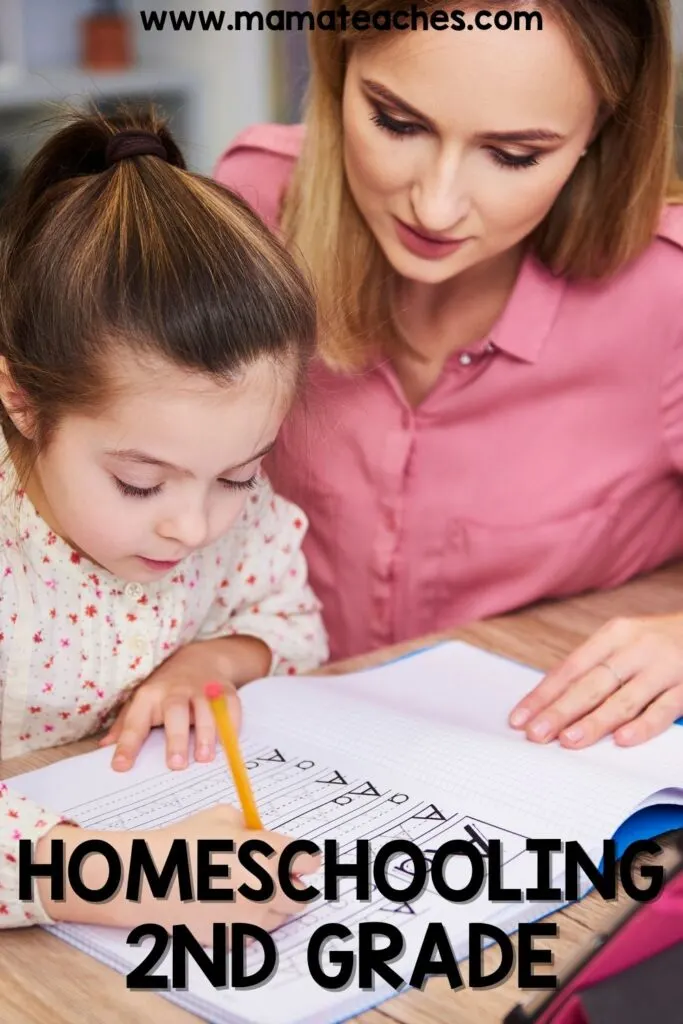
2nd Grade Homeschool Curricula
The homeschooling publishing market has exploded in recent years with the increasing number of homeschoolers.
With so many options available, you can find programs that work for your family’s needs.
Here are some recommendations for printed, online, and free curricula.
For a complete list, check out our Ultimate Curriculum Directory.
Printed Curriculum
My Father’s World
This Christian all-in-one homeschool program is hands-on with plenty of activities and projects.
It covers the material through unit studies, so all the subjects coordinate around the theme (2nd grade is US History).
Handwriting Without Tears
This handwriting program was developed by an occupational therapist, so it is the perfect fit for all children (even those who struggle with writing).
The alphabet (both manuscript and cursive) is simplified and logically presented.
The Story of the World
History doesn’t need to be boring.
It is, after all, a story, and children love stories!
This four-volume history series is engaging and chronological (just pick one volume for the year).
You can purchase the accompanying activity books to round out your study since they have coloring pages, literature recommendations, review questions, activities, and map work to go along with each chapter.
Spelling Workout
If your child likes workbooks, this vetted spelling program may be a great fit.
Each workbook corresponds to grade level (Level B is second grade).
The word lists are grouped phonetically, and each lesson has puzzles, proofreading, and a short writing activity.
Do one lesson per week.
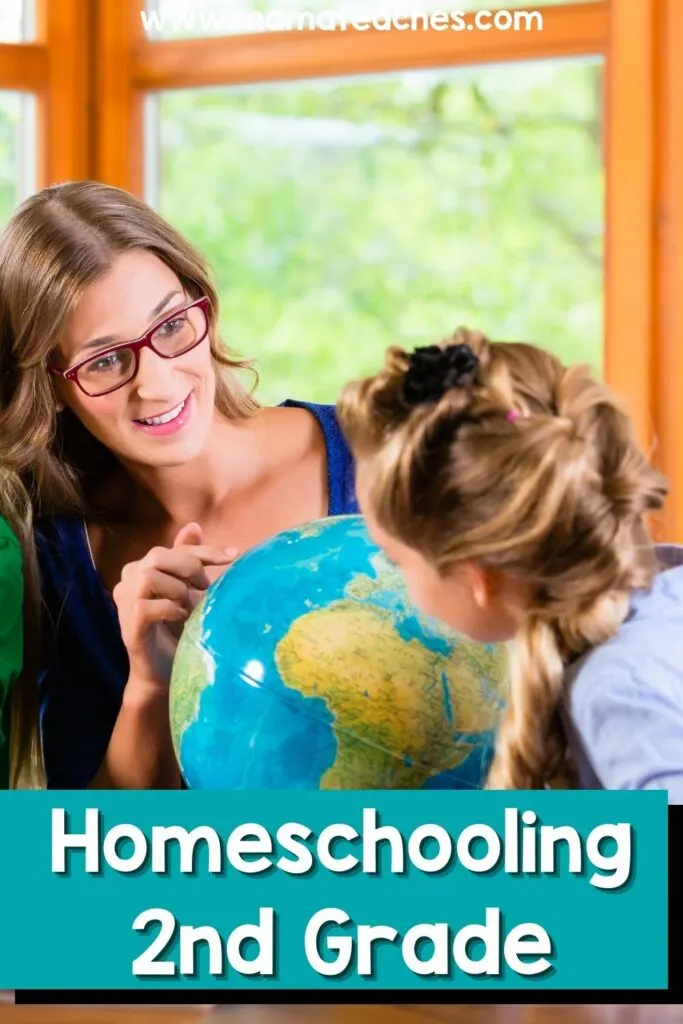
Online Curriculum
Time4Learning
Time4Learning is a great choice for independent students who respond well to online learning.
This all-in-one curriculum has lessons for all the subjects, and the program provides assessment and record-keeping (even lesson plans) for the parent.
Beast Academy
Beast Academy puts the fun back into math by presenting it in comic book form.
You can choose to complete the course 100% online or use a combination of online and full-color math books.
This program uses a lot of games and puzzles to draw even the reluctant math student into problem solving.
Free Curriculum
Khan Academy
Khan Academy is known for its robust high school offerings, but they are moving into the younger grades.
They currently have second-grade math and are developing second-grade reading and vocabulary as well.
Discovery K12
This online all-in-one homeschool program works on tablets, laptops, and desktops.
It has a full free 2nd-grade curriculum with language arts, math, science, social studies–even visual arts and PE!
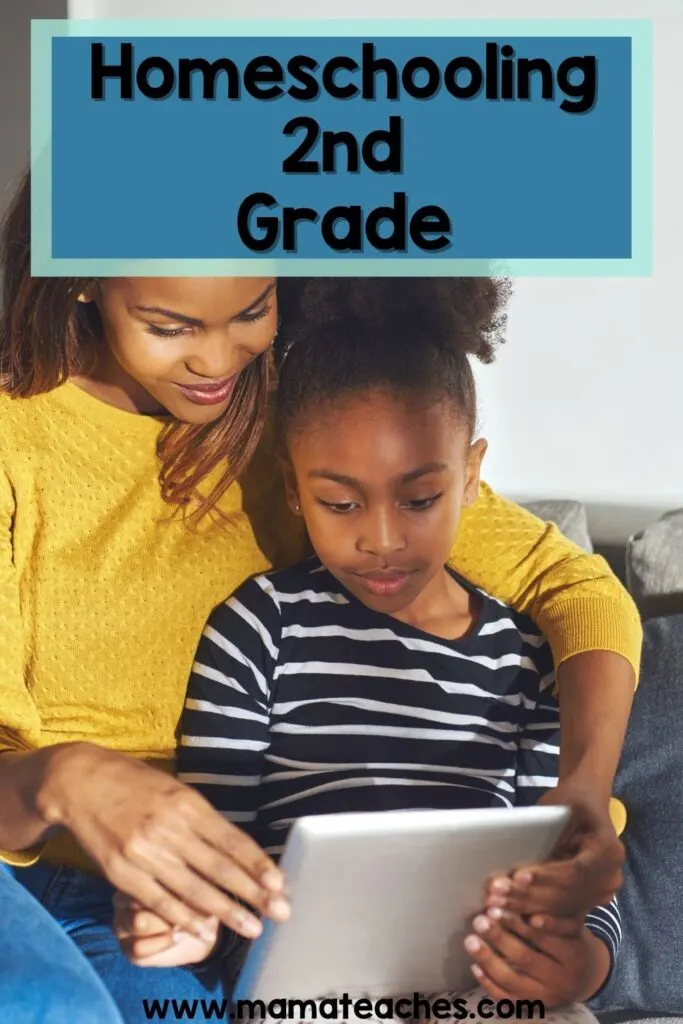
2nd Grade Homeschool Schedule
Although your second grader can sit and pay attention for longer periods, you don’t need to spend all day at a desk.
Plan frequent brain breaks and continue to explore, craft, play, cuddle, and read together.
Here is a sample day, although this will look different for every family:
- 7 am Wake-up, get dressed, eat breakfast
- 7:45 am Morning circle time (read a short story, poem, or Bible lesson together, stretch, sing–whatever centers you!)
- 8 am Reading lesson (20 minutes)
- 10-minute break
- 8:30 Math lesson (20 minutes)
- 10-minute break
- 9 am Writing and composition (20 minutes)
- 10-minute break
- 9:30 Walk, outside play, or learning apps (30 minutes)
- 10 am Spelling and handwriting (30 minutes)
- 10:30 am Hands-on science, math, or social studies activity (30 minutes)
- 11 am Read aloud for social studies, science, or literature (or use audiobooks) (20 minutes)
- 10-minute follow-up activity (review questions, map work, coloring page, story chart, etc.)
- 11:30 Lunch & free play
- 12:30 pm Optional lesson time for social studies, science, music, or art (30 minutes)
- 1 pm PE time – walk, yoga, dance, outside time, playground time (unless your child is involved in organized sports later in the day) (20 minutes)
- 1:30 pm Independent reading (20 minutes)
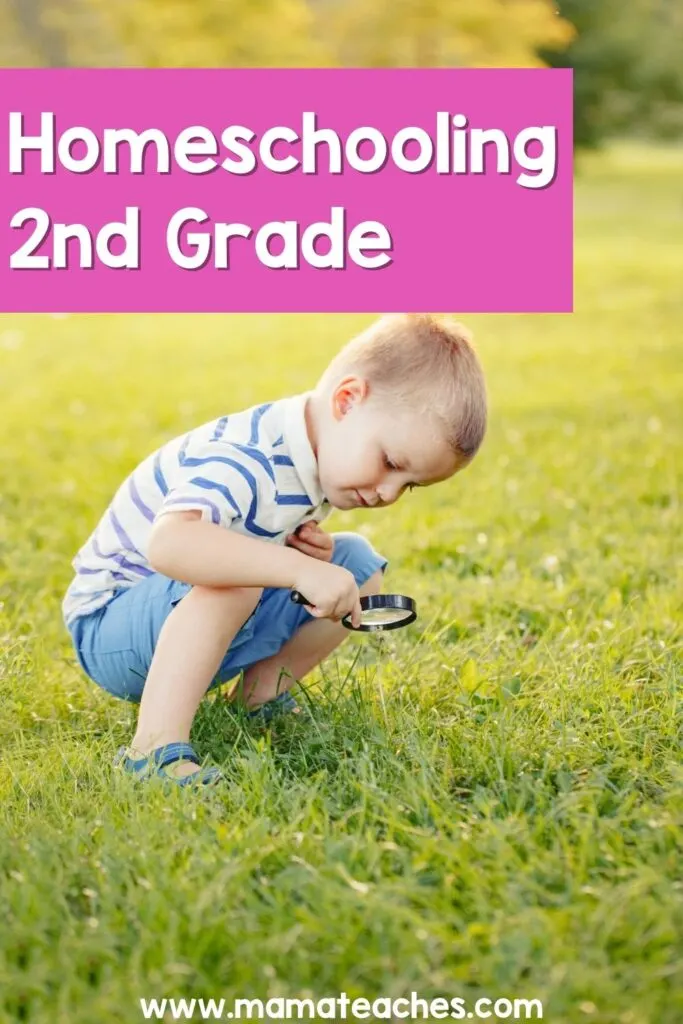
Homeschooling Second Graders
This year your child is picking up steam as a learner.
You can likely see the almost miraculous progress in reading, writing, and math.
When homeschooling second graders, take advantage of your ability to tailor instructor and make your own schedule.
Above all, enjoy this time with your young learner.
You have a front-row seat to watch her grow!
